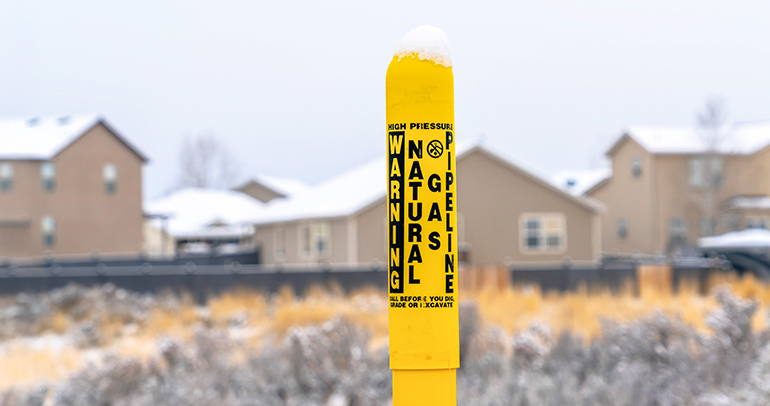
Who is your customer service nemesis?
You probably have one … the company that makes your blood pressure rise the moment you think about dealing with it.
Could it be the phone company with the poorly designed interactive voice response (IVR) system that hangs up on you after 40 minutes of reassurances that your call is important? The pharmacy that lets you pay for your refill online but has no record of the payment when you get to the counter? Or the insurance company that sends you policy updates that were clearly written for industry attorneys?
My customer service nemesis? It’s a telecom that’s haunted me on and off for decades because it’s usually the fastest (or only) internet service provider available that doesn’t require a satellite in the cities where I’ve lived. This company has made it difficult to start and stop services. It once changed my customer account number without notification, then made it difficult for me to figure out the new account number because—get this—I couldn’t access account information without my new account number.
I could go on.
The ironic part? This company has excellent service delivery. When the internet particles are flowing (and they usually are), everything is copacetic, and normally, I’d be singing its praises. But the fact that the company is so difficult to do business with has turned me into an absolute detractor. The kindest thing I’ll ever say about it is, “99% of the time, its service and equipment are on point, but if you ever have to do anything besides use the internet and pay your bill, you have my deepest sympathies.”
Understand Your Customers’ Pain Points With Cogent Syndicated Data
If you work at a utility, your company could be someone’s customer service nemesis.
At Escalent, our Energy team works closely with utilities throughout the US to improve customer service and satisfaction. Each year, we identify the utilities that are easiest to do business with, according to our Cogent Syndicated Customer Effort Score, a derived score that encapsulates multiple attributes across our Utility Trusted Brand & Customer Engagement: Residential study. These utilities consistently make it easier for customers to pay their bills, find information on and use relevant programs, and solve issues across service channels with minimal effort.
This year, the Customer Effort Score plummeted industrywide by 11 points year over year to the new historic low of 713 (on a 1,000-point scale). The industry’s low Customer Effort Score trend is driven by the lack of easy-to-use utility programs and declining ease of resolution across customer service channels.
However, despite this trend, the utilities we recognized as the 2024 Easiest To Do Business With facilitated more seamless customer transactions and interactions, outscoring the industry as a whole by 4% to 7% across Customer Effort Score attributes.
How Utilities Can Improve Customer Perception and Satisfaction
The Cogent Syndicated study quizzes customers on dozens of perceptions and diagnostics, allowing us to offer actionable insights to utilities on everything from communication to value to customer service satisfaction. When I discuss low-scoring Customer Effort attributes with study subscribers, we usually uncover issues relatively quickly.
Here are some examples I’ve encountered with clients over the years and three actions you can take to make it easier for customers to do business with you.
1. Have Backup Plans in Place
One client received lower ease-of-resolution scores from customers using the mobile website to gather outage information. Upon digging into why, we found out that was around the time the utility’s outage management system stopped talking to customer-facing channels for a week, during which time the utility faced two windstorms within four days.
Customers rely on their utility provider to be their source of truth when power outages occur. This means all communication channels—phone, text and website—need to be in sync, since they sustain high levels of use when power emergencies arise.
While no one can control Mother Nature or technology, proactively preparing for potential worst-case scenarios that your customers could face with the varying communication channels you have in place and improving how these channels work interchangeably together can help ensure customers get the information they’re seeking when they need it.
2. Educate Customers and Empower Customer Service Representatives
For one utility I worked with, we noted declining customer service representative (CSR) scores from customers calling in to review their bill. Upon discussion, I learned the company had released a redesigned bill without providing customers a “here’s how your new bill works” resource or properly training CSRs on how to explain the new layout and feature.
When utility companies redesign the look of their bills or their bill-paying process, they typically aim to enhance readability and streamline the billing process for customers. While these are valid objectives, the success of such endeavors hinges not only on the redesign itself but on how effectively changes are communicated to customers.
Other times, there are surprises that really should not be surprises. One utility I talked to implemented a new IVR system for paying bills. That should be one of the most streamlined actions in the IVR, right? Oh wait, turns out, the utility had a separate IVR for customers to pay their bills, complete with a different phone number, but it was still printing the regular customer service number on the bill itself.
The takeaways? Proactively educate your customers about any upcoming changes to their bills, accounts or processes with which they do business and communicate with you. Offer resources such as FAQs, explanatory documents and guides that are easy to find and use.
Also, don’t forget about your CSRs. Invest in training your CSRs to be well-versed in the intricacies of new billing formats, updates to customer accounts, and changes to business procedures and communication channels. Ensure CSRs are equipped to answer questions and confidently guide customers through any new process.
Effective customer service and resources are essential in ensuring seamless transitions and minimizing customer frustrations when changes occur.
3. Keep in Mind That Customer Age Is Nothing but a Number
Companies sometimes misattribute low scores to their oldest customers, following the longtime assumption that retirees haven’t kept up with technology and are angry they can no longer stroll into their local utility office and strike up a conversation while they slowly fill out their check to pay their monthly bill. Sorry, that stereotype doesn’t hold water anymore.
Today’s age 65+ customers are more likely than not to be technologically adept. Sure, as a group, they indicate the highest preference for using a CSR to solve a customer service issue—but they also show the highest preference for using text messages and the utility website to solve those issues.
Indeed, customers 65 years and older have the highest Customer Effort Scores across all age groups.
The lowest-scoring age group? Customers ages 45 to 64, who also have the lowest monthly manageability perceptions. These customers are still in the workforce, many have children and/or teenagers living at home, and some are caring for aging parents. In short, many are cash-crunched and don’t have time to fool around with confusing bills, complex enrollment processes, and customer service channels filled with roadblocks.
Prioritizing Customer Effort Improvements
The Energy industry’s landscape is transforming, driven by technological and economic challenges that directly affect how utility companies meet customer expectations.
Is your utility someone’s cautionary tale, or are you making it easier for customers to do business with you?
If you want to prioritize Customer Effort improvements, we can guide you in that process. Reach out to talk with one of our Energy experts today.
Want to learn more? Let’s connect.








